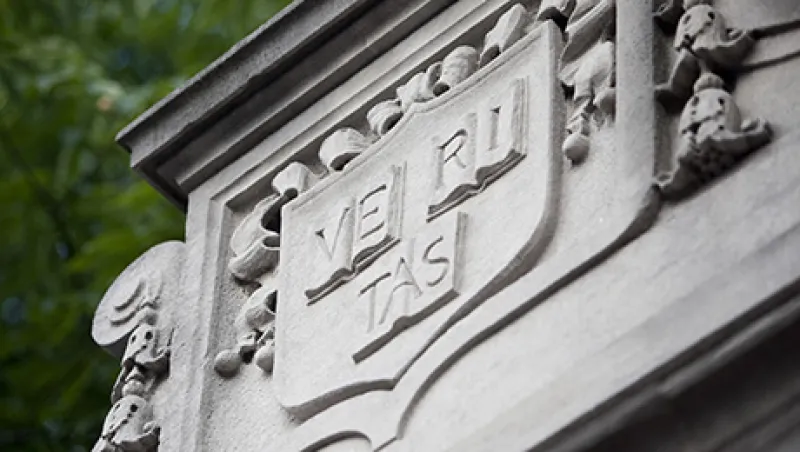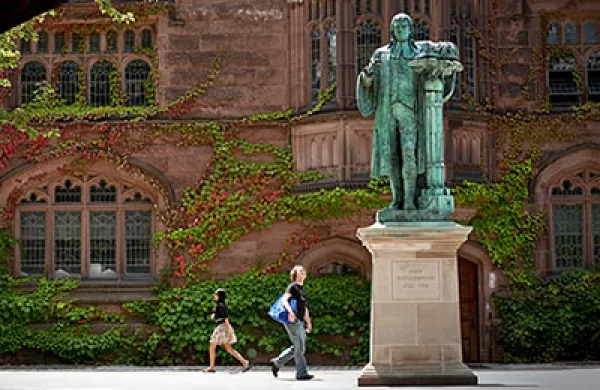Harvard Management Co.’s June 10 announcement that president and CEO Jane Mendillo will be exiting her role at year-end has set the investment management world abuzz. And why not? HMC, whose assets were last publicly valued at $32.7 billion, on June 30, 2013, oversees the world’s largest university endowment. And, with 42 percent of the portfolio managed by 120 investment professionals in HMC’s Cambridge, Massachusetts, office, it’s a fairly large asset manager as well.
Like the proverbial 800-pound gorilla, when Harvard makes a move, the earth shakes. Although most educational endowments suffered losses in the financial crisis of 2008–’09, Harvard’s 27.3 percent fall made the biggest noise of all. That loss, which wiped out $10 billion of the university’s assets as of June 30, 2009, loomed larger than, say, Yale’s $5.6 billion loss or Princeton’s $3.7 billion drop.
It was into this devastation that Mendillo stepped when she took on the CEO role on July 1, 2008. To tackle the massive job of rebuilding the HMC portfolio, she brought with her six years’ experience building an investment office as CIO for the then–$1.5 billion Wellesley College endowment and 15 years at HMC prior to that overseeing external timberland and real estate managers and sitting on the internal equity and private equity management teams, among other tasks.
As befits its outsize reputation, Harvard’s endowment has always drawn attention. Its endowment management was the first to be recast as an investment office in the early 1970s, to ensure at least a perception of independence from the school itself. For its part, Yale’s endowment also converted to an investment management company in 1973 before reverting to a traditional endowment office soon thereafter.
The investment office arrangement allowed Harvard to design a compensation system different from that of the university. That eventually backfired when questions arose from alumni and others about compensation levels in the early 2000s that were approaching and passing the $10 million mark for some investment professionals. The CEO at the time, Jack Meyer, was essentially managing 85 percent of the endowment assets as a hedge fund, including short positions. The criticism over compensation led to the end of the 15-year Meyer era and its 15.9 percent annualized performance.
The conundrum of paying investment professionals to scale in a university-owned investment office is a knotty issue at other endowment, foundation or even large pension fund offices. In January 2006 no less a personage than the revered Yale University CIO David Swensen challenged the salaries at HMC during a question-and-answer session at a conference sponsored by the National Association of College and University Business Officers (NACUBO). “I have long said that the structure of Harvard Management is inherently unstable,” Swensen said. “You can’t pay managers astronomical amounts of money because it tears at the fabric of [the university],” he concluded.
In 2005 when Meyer, who had once been treasurer and CIO of the Rockefeller Foundation, left Harvard to set up his own Boston-based hedge fund firm, Convexity Capital Management, the Harvard trustees selected a new CEO from the asset management world. Mohamed El-Erian had spent six years running a $28 million emerging-markets portfolio at fixed-income giant Pacific Investment Management Co. (PIMCO) in Newport Beach, California. El-Erian’s annualized net return of 20.1 percent on the fund he managed must have been quite compelling.
“I’m so aware of the responsibility,” El-Erian told Institutional Investor in 2005, speaking of his new role. “I know what a 1 percent difference in the endowment return makes in terms of the Harvard community’s ability to maintain its excellence.” El-Erian, who holds a Cambridge University undergrad degree coupled with a master’s and a Ph.D. in economics from Oxford, also knew that as the ultimate buyer he would have a front-row seat in assessing the asset management world.
“You get to see hundreds of managers — both those who manage your money and those who would like to,” El-Erian told II.
But El-Erian’s tenure was brief. In September 2007 he announced he was leaving Harvard and going back to PIMCO. The door was open for Mendillo’s return to HMC as CEO, partly on the recommendation of her former boss, Meyer.
As with El-Erian’s departure, in the face of uncertainty and a rich lode of possibilities, speculation about the reasons for Mendillo’s exit is escalating. Theories such as fund underperformance relative to HMC’s peer group and investment and management challenges abound. HMC’s 2013 performance at 11.5 percent came in under the 11.7 percent average for the more than 800 schools in the annual NACUBO-Commonfund Study of Endowments. Its five-year return of 1.7 percent also was lower than 11 other Ivy League and similar schools.
Meyer argues that HMC is a more difficult place to work than other large endowments, foundations or pension funds. “It is constantly under intense scrutiny and intense competition,” he says. “Every fall it’s a three-month news story when they release the [performance] results.” Not every endowment watcher concurs. “I agree that the job of running a lot of money is pressure-filled,” says Charles Skorina, principal of his eponymous San Francisco executive search firm. “I don’t agree that Harvard has more pressure. You can’t tell me that Narv [N.P. Narvekar] at Columbia or [Andrew] Golden at Princeton doesn’t have board pressure.”
For long-time investors the landscape has changed. “Back in the 1990s there were $20 bills all over the sidewalk,” jokes Meyer. Assets classes like timber, which entered the HMC portfolio in 1997, and Treasury Inflation-Protected Securities routinely produced high returns. Meyer also believes that the portfolio’s sheer size makes it difficult to invest, which is due in part to the way the top private equity managers distribute capacity in their funds. For example, Harvard will get the same $15 million allotment that much smaller funds like Princeton and MIT receive, making the allocation less impactful. “When I was at Harvard, that was one of the key issues,” he says.
Much has been made of the effectiveness of the changes Mendillo made to the portfolio and investment team. Like her compatriots at large schools like the universities of Chicago, Michigan and Notre Dame, Mendillo in 2010 hired a chief risk officer, Neil Mason, to end-run another financial crisis. “The risk tolerance of the university is a key component of our portfolio construction,” she told Institutional Investor in early 2011. Last year she announced the hiring of another new risk officer, Jake Xia. Critics point a finger at these personnel changes, including a couple of high-profile exits from the private equity team. “A person like that, in such a visible position, is bound to attract some criticism,” says William Jarvis, a managing director at Commonfund Institute, the research arm of the Wilton, Connecticut–based endowment and foundation.
In the end, it may be that Mendillo, like Meyer and El-Erian, has just had enough. “This job, heading a university endowment and producing extraordinary results, is much harder now than when I did it,” explains Meyer. “It’s much harder to add value than it was 15 years ago.”
Get more on endowments and foundations.
Follow Frances Denmark on Twitter at @FrancesDenmark.






